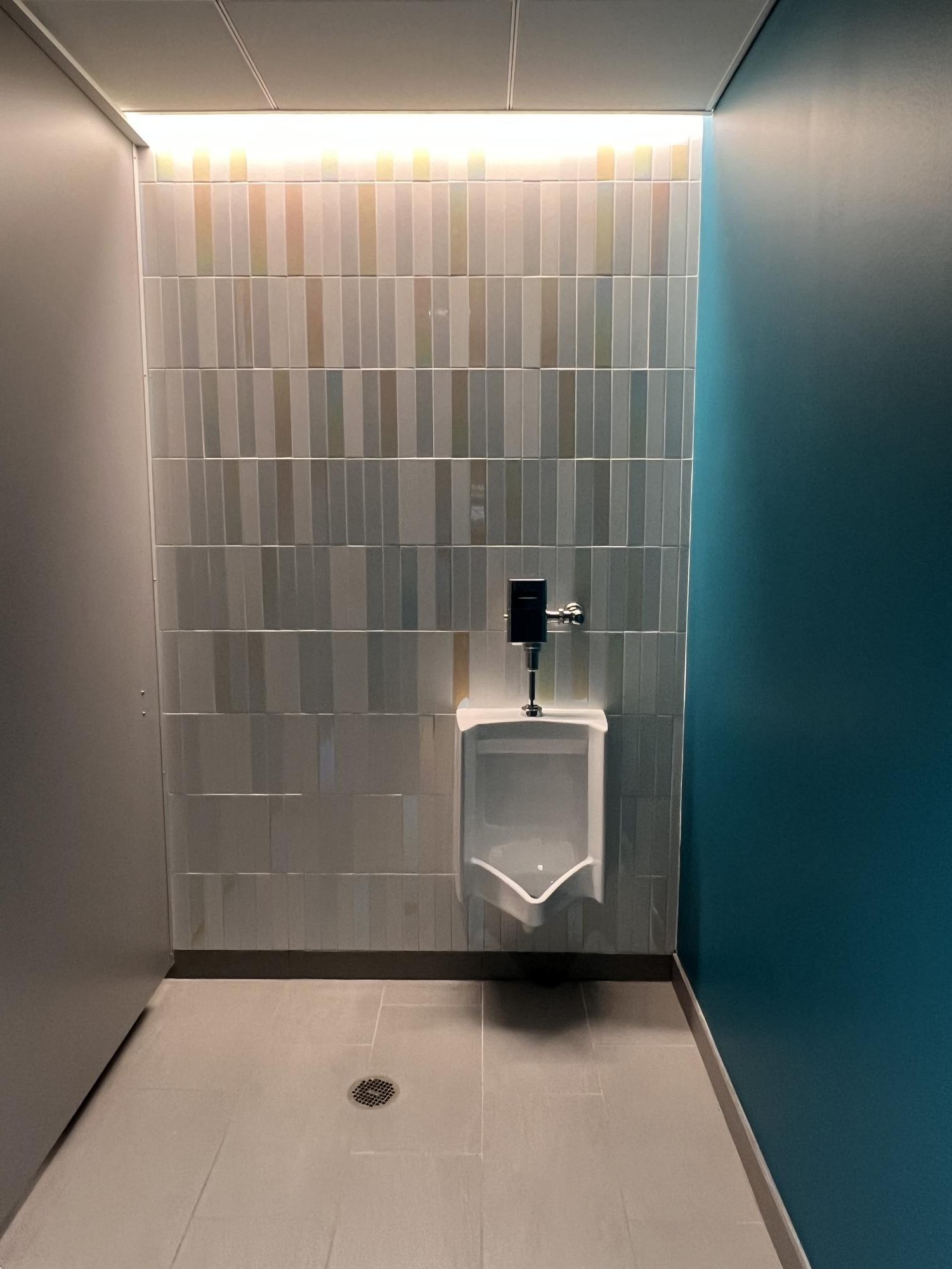Northeastern’s new research center, EXP, is full of sleek new spaces and high-tech quirks — a giant neon-lit robotics room, study spaces, automated curtains and the Makerspace. However, the most exciting feature for me and the other queer people in my life are the gender-neutral bathrooms.
Before the news had spread like hot gossip through the queer community, I had a few minutes before class to explore EXP for the first time. I quickly noticed the gender-neutral bathroom on the second floor. But, as I spiraled up the central staircase, something dawned on me: Was there a single gendered bathroom in the building? I scoured the complex for almost an hour, taking stock of every public restroom I could find. While I succeeded in putting the security guards on edge, I failed to find one.
Instead, most floors have a large communal gender-neutral bathroom. Toward the entrance, each has two rows of sinks and a free tampon and pad dispenser. Just past that are two rows of stalls complete with sleek gray floor-to-ceiling wall-to-wall panels — without even the tiniest gap between them — for each of the toilets and urinals. What’s more, across from every communal bathroom is a pairing of lactation rooms and single-user bathrooms similar to what you would find in a house, some with showers.

The bathrooms are a gift for everyone who likes some solitude when they go, but for individuals outside the gender binary, it is a radical step forward, allowing them to feel comfortable and welcome in the public space.
Public restrooms weren’t the only places unrepresented genders felt unwelcomed as women entered the workforce toward the end of the 19th century. Men had segregated almost all aspects of public life: Libraries, schools and gyms. (I’m looking at you, “M” in YMCA.)
Now, only the segregated public restroom remains. It is vestigial of a time when social conservatives segregated spaces under the excuse that women were weaker and needed to be “protected” — especially from Black men. They echo the same argument today, but now they say cis women need to be “protected” from trans women.
Under the trans bathroom cultural war, the practical reason bathrooms have remained gender-segregated is painfully mundane: Plumbing codes often require buildings to have a certain number of men’s and women’s bathrooms, inadvertently preventing builders from replacing traditional bathrooms with gender-neutral facilities. Until 2017, gender-neutral bathrooms counted toward the minimum number of bathrooms needed in the building in Massachusetts but not the minimum number of men’s or women’s facilities; the old code implies EXP has zero available bathrooms for both men and women. These complicated rules also often lead to more men’s facilities — since urinals require less space — hence the notoriously frustrating “women’s bathroom line.”
While spending time in Northeastern’s LGBTQA Resource Center, my peers told me about the struggles of navigating a world of gendered bathrooms. Before the center unveiled its own brand-new gender-neutral bathroom this past fall, the only gender-neutral bathroom in Curry Student Center was located in the back corner of the top floor. While some students who identify outside of the gender binary would make the walk (or sprint) up to the fourth floor, others submitted to the discomfort of the gendered bathrooms.
The problem extends far beyond Northeastern: “For my last job … there was a women’s bathroom literally right next to our office, and I’m not going to hike three floors down to the other side of the building in order to use a bathroom that I feel safe in,” said Mim Merchant, a fourth-year human services and sociology major who is nonbinary.

EXP solves this stressful calculus effortlessly. With only gender-neutral bathrooms, it removes any question about the equity of the bathrooms — between gendered and non-gendered. This approach also creates a safe haven for people who are questioning their gender identity or aren’t out yet, which is often an all-consuming experience with fear and anxiety that seeps through all aspects of life.
“It’s really nice, especially for queer people and especially for queer people who aren’t out to their families,” said Luka Romera, a first-year biochemistry major who is genderqueer. “Because then it’s not seen as ‘Oh, what are you doing?’ It’s just, that’s the only option.”
At the end of the day, a clean bathroom with privacy is nice for everyone — regardless of political ideologies or opinions on LGBTQ+ issues. It’s the perspective Northeastern seems to be going with: If you simply make bathrooms that are pleasant and private for everyone, you don’t need to make a public announcement about how your new accommodations benefit specific groups or identities — which is destined to upset some people and threaten the comfort and safety that the bathrooms were designed to create.
“As someone who very much wants gender-neutral bathrooms whenever possible, I think that quietly shifting toward that is a very good way to do it,” said Daniel Valentine, a nonbinary first-year cyber security major. “If you … make a whole announcement about it, there’s a good chance you’re going to get attention from people who are just there to cause trouble.”
In the higher-education space, where universities often offer little more than lip service for marginalized groups, it’s a welcome counterexample.
Noah Haggerty is a fourth-year applied physics major. He can be reached at haggerty.no@northeastern.edu.









